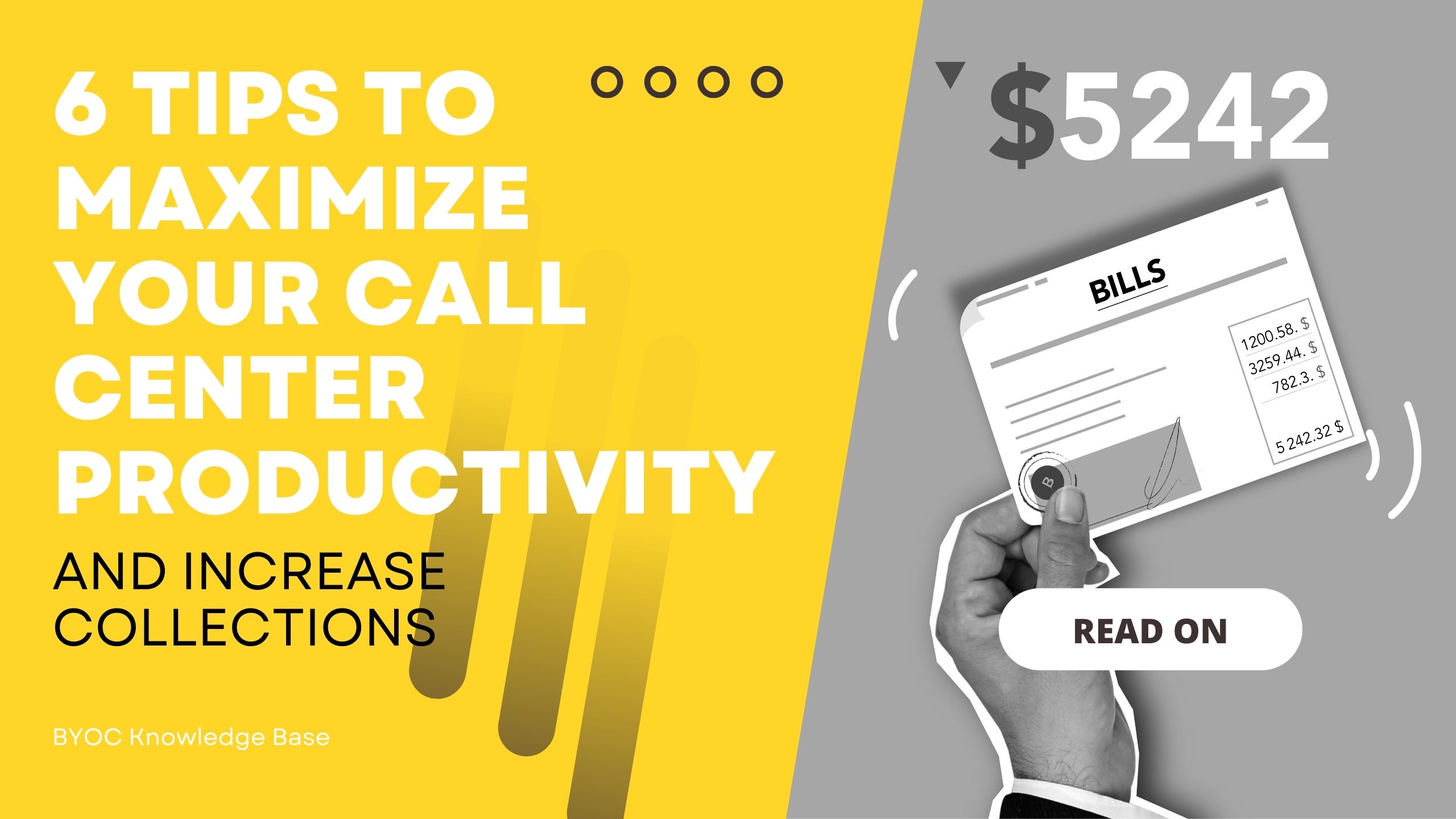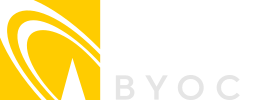
6 Tips To Maximize Your Call Center Productivity And Increase Collections

In this article
Due to the COVID19 pandemic, many businesses struggled with debt collection and had to negotiate outstanding dues with customers who were dealing with financial issues. But things are returning to normal now, or maybe a different kind of normal, and businesses need increased cash flow to remain viable, so debt collection is picking up again.
Customers may struggle to pay their debts in today’s difficult economic climate and most people do not like the process of calling a customer to ask for the money they owe. Collection calls are frequently the last thing on the to-do list in credit departments that are overworked and understaffed. It’s not an easy job, and there’s the added stress of failure or embarrassment.
This is why collection agencies must improve collection methods by utilizing an efficient call center solution that will increase service agent productivity and maintain financial stability. A good collection strategy not only boosts revenue but also ensures long-term stability and growth.
These six techniques will assist you in maximizing your call center solutions and increase debt collection.
1. Boost Your Productivity With Automated Dialing Systems (ADS)

In the traditional debt collection scenario, a collection agent must manually dial numbers. This includes dealing with poor connectivity, busy tones, no responses, and answering machines, as well as taking physical notes. As a result, the agent only has 15 minutes of productive time per hour and can interact with 40-50 contacts per day, while an automated dialer reduces agent idle time.
Agents can improve their connection rates by at least 200 % using advanced automated calling systems. This means that each collection agent can handle nearly twice as many calls per hour. Wait times, dropped calls, and agent idle time can all be reduced with predictive dialing software and automatic dialer algorithms. Calls can be routed to agents automatically based on call duration, availability, and expertise.
2. Find the Best Ways to Communicate and Automate
The first step in effective debt collection is communication. In all customer communications, personalization is essential. Choose the best channel for each individual – could be SMS, email, or phone calls.
Before picking up the phone, gather as much information as you can to understand everything about the debt incidence you’re calling about. Having the facts on your side keeps you in command. You don’t want a blank stare to derail the conversation. Many customers know when you don’t have accurate or complete information so before reaching out, make sure you have the following details:
- Sale terms
- Bought goods/services
- Amount owed
- Due date
- Other unpaid invoices
- The person you’re calling.
Once a payment plan has been agreed upon, it should be summarized for the debtor. The debtor’s payment schedule and method should be included in this summary. Inform them via email, fax, or letter and request that the debtor contact you once payment has been received. Maintain contact with the debtor even if they cannot clear the dues right away. They may be able to pay in the future, and by conversing with the debtor and paying close attention, you may be able to help them pay sooner.
It’s also a good idea to review the customer’s payment history with your company and any other payment defaults they may have to determine whether this is a one-time incident or a pattern.
Allow for some flexibility – A customer who is having trouble repaying a debt may be able to pay over time. Pay attention to what they have to say and make suggestions until a solution is found. Later, you can devise a plan that benefits both of you.
To save time, automate as much as possible after determining the best communication channels. Payment reminders can be automated to save time and allow employees to focus on other responsibilities. Additionally, automating the payment communication cycle increases the likelihood of timely payments, which helps prevent customers from getting into debt.
3. Document Everything

A cloud-based call center solution can assist in recording the details. In addition, customers can be contacted instantly through a cloud-based dashboard, and debt collectors should do so as well.
Keeping meticulous notes while discussing the outstanding bill with the customer will help you avoid future debt disagreements. If your company uses tracking software, fill in the blanks as much as possible and continue to add new information to your file when you get them.
Explain the payment plan to the debtor in person. First, it is vital to summarize when and how the debtor will pay. Following that, document it via email, fax, or letter.
In the event of a complaint or argument, the information will be used for these purposes:
- You can use the collectors’ notes and call recordings to back up your case.
- Easier to follow up.
- It can be used to disseminate information to your call center agents and the rest of your company because calls from creditors are handled by whoever answers the phone. So the person who started the process may not be the one answering the phone at that time.
4. Data and Debt Collection Systems Should be Centralized

A customer-focused debt collection operation requires data. The more information you have about each customer, the more you can automate and personalize. You can do this by centralizing customer information.
Creating a centralized system is one of the most effective ways to cut debt collection costs. All collection staff can access the same database with a centralized system. It activates dialers and collectors to work or evaluate accounts in the event of an issue. When set up and maintained correctly, the system makes all receivable information easily accessible and searchable by the account manager. Companies can reduce costs and account time by utilizing a centralized system that is simple to use and contains all necessary data.
Workflow, decision-making, customer service, data communication, and other aspects of unified debt collection are all included. This allows for developing a more complex and personalized debt collection process. This method of debt collection not only saves you money but also increases recoveries by allowing you to make personal contact with your most difficult creditors. This can assist you in converting debtors into customers as well as increasing debt collection and settlement.
A centralized debt collection system can also help track client payments using analytics. It can alert you to chronic or gradual lateness to “get ahead” of potential issue accounts. In other words, it can help your business avoid bad debt.
5. Use Customer-Oriented Operations
Customer-oriented operations make payments simple, fast, and secure. Therefore, collection agencies should consider accepting or employing app-based payment options alongside web-based ones. Automatic phone calls and online payments can help secure easy collections, and most debtors are usually ready to work out a payment plan when they are accessible.
Online solutions are now the most convenient and secure way to receive payments. With tools like PayPal and Square, you can issue invoices and accept payments without a third-party merchant credit card services company. A growing number of pre-programmed settlement portals allow debtors to make offers or schedule payments without human participation. Automating your debt collection process is critical to reducing expenses and improving results. It will also make payments, settlements, and reminders via text or email easier and faster, thereby improving customer experience.
Keeping up with the latest customer-focused technologies is vital since communication channels continuously change.
6. Choose the Right Carrier for Your Call Center Platform
You need a reliable and superior-quality cloud-based network carrier as a debt collection company. It will help in the effective management of customers and debt by integrating customer information from a variety of sources into a detailed, accurate single-customer record. It should also have call recording and predictive dialing capabilities. In addition, a better answer-to-seizure ratio (ASR) will increase collections.
Most of the time, a cloud-based solution will be required to do the work because it can sift and merge multiple data streams. It also has improved outbound and inbound calling capabilities. IDT BYOC provides an organization with superior voice quality, scalability, carrier reliability, and redundancy for business continuity, coverage, and control.
An organization with a subscription to a cloud or hosted voice platform may not be delighted with the options, quality, support, or termination rates that the platform provider has to offer. With BYOC, the organization can directly negotiate billing and management of its voice services with an external Voice carrier of its choice.
BYOC offers the requisite needs for an efficient call center platform, and IDT’s operational flexibility allows organizations to scale and grow with the assurance that they will receive full support from a trusted partner.
Do you want to increase the efficiency and amount of debt collected this year and in the future? Take a look at the BYOC cloud-based platform. Contact us!
Keep in the loop and get our latest articles via email.



